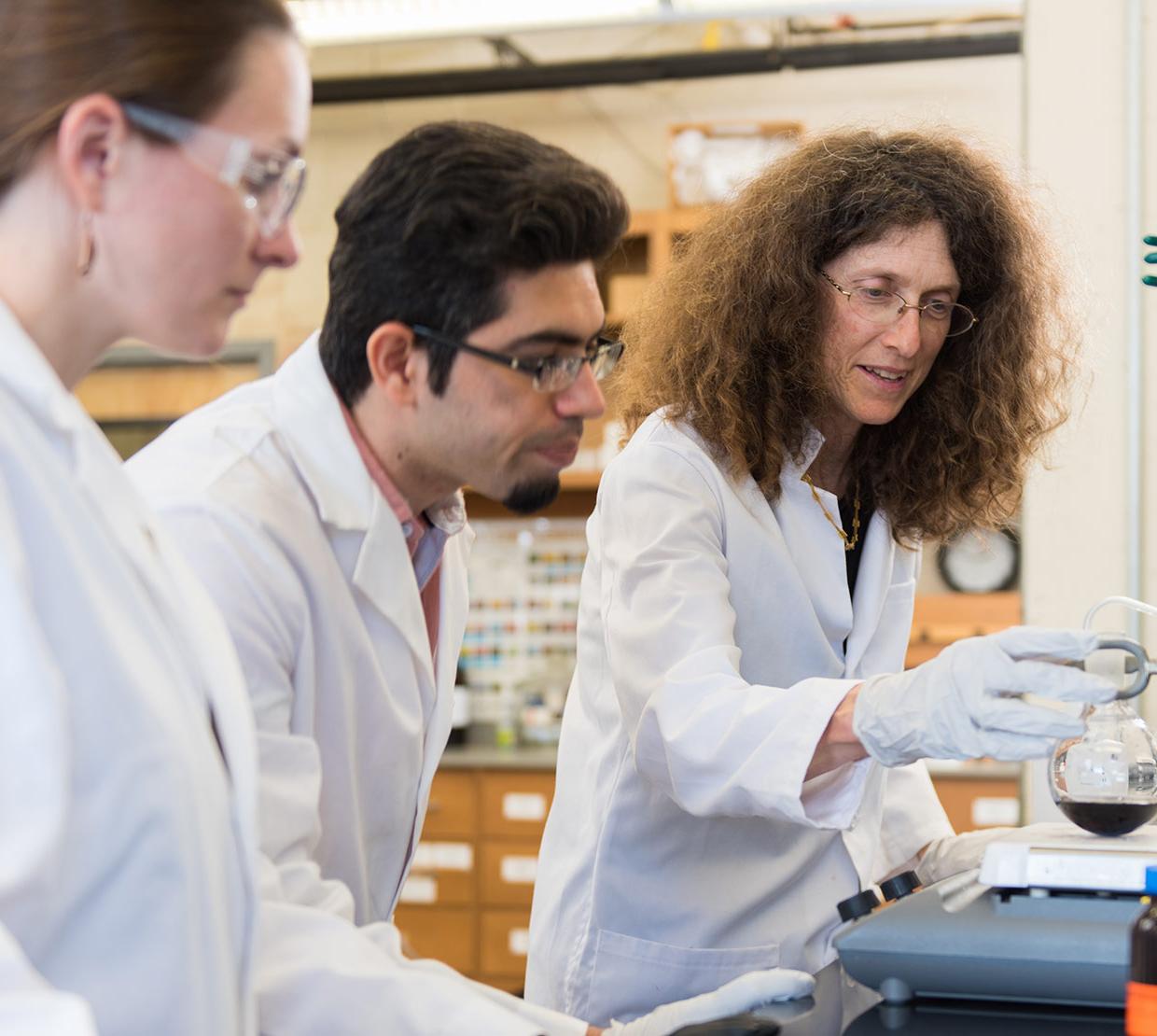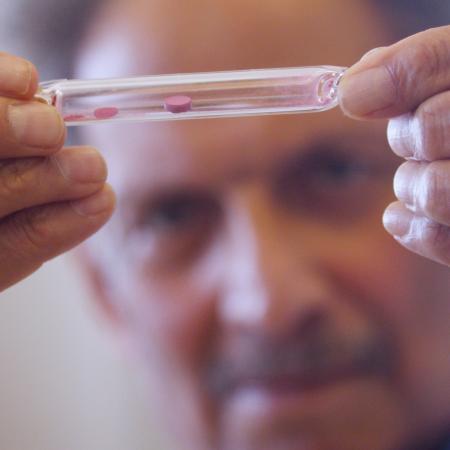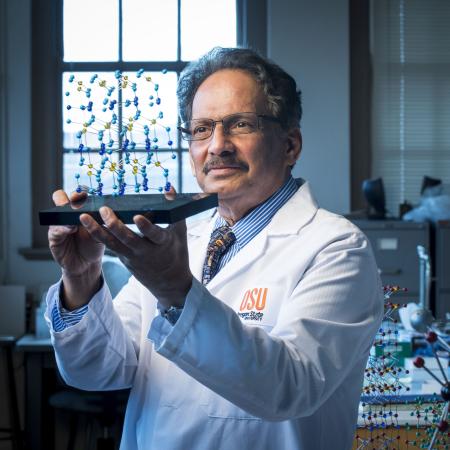New materials neutralize chemical warfare agents
Associate professor of chemistry May Nyman and her research team have developed the first inorganic, molecular materials that can effectively degrade dangerous chemical warfare agents—including Sarin and Soman used most recently in a chemical weapons attack last summer in Syria—rendering them harmless.
The science behind the discovery works like this. Nerve agents, such as fluorophosphate molecules that make up chemical warfare compounds, encounter a "barrier net" of polyoxoniobates (such as when integrated into protective clothing), and degrades them, which negates their toxicity and protects people from the deadly chemicals.
Nyman and her team found that the high charge density of polyoxoniobates make them readily protonated so they can neutralize nerve agents. This study demonstrated the neutralization of actual and simulated nerve agents by using polyoxoniobates. The researchers were pleasantly surprised by the effect that the counterion had on the neutralization reaction, as it enforced the unique fundamental phenomena of polyoxoniobates that Nyman has been probing by both theory and experiment for nearly 12 years.
Their research was published as a cover article in the May issue of the European Journal of Inorganic Chemistry. This research has revealed two significant benefits. First, since polyoxoniobates are easily dissolved and stable, it is easy to transfer them from one material to another, which accelerates research and ultimately manufacturing time to create products that protect people and save lives. Secondly, polyoxoniobates are entirely inorganic substances, which makes them more stable in extreme environments and as a result, a highly viable solution for protective clothing for the U.S. military.
The potential applications of these new materials are numerous. For example, the chemicals may be useful in protective clothing, gas masks, or vehicles for the military or in use in upholstery or other household materials for the general public. The impact and potential for industry is tremendous.
But this discovery would not have been possible without the 12 years of hard work and perseverance of basic science research.
"The foundation of science is curiosity-driven research and a passion for scientific discovery," says Nyman. "Fundamental research can lead to innovations and breakthroughs that change how we interact with the world."
The research group has closely collaborated on these ground-breaking studies both virtually and onsite. The group consists of Mark Kinnan of Sandia National Laboratories, Heidi Schreuder-Gibson of the U.S. Army Natick Soldier Systems Center, and Bill Creasy of the U.S. Army’s Edgewood Chemical Biological Center, the nation's principal research and development resource for non-medical chemical and biological defense. Although the groundwork studies were done using simulants at Oregon State and U.S. Army Natick, the testing of actual nerve agents was done at Edgewood. The military center provided a secure, stable environment to study these chemicals, which is especially important given their potentially harmful nature.
The researchers found that the polyoxoniobates were even more effective at neutralizing the actual chemical warfare agents than they were on the simulated chemicals in the lab testing.
The next research phase will explore how to incorporate the nerve-agent-degrading materials into fabrics and how to optimize their performance in protective clothing or masks. The goal is to understand how the chemicals attach to a surface and then to test how the materials function in different environments, such as extreme arid conditions or extreme heat. Further studies are needed to fully comprehend the effects of rain forests or desert-like conditions in which combat troops often work; as well as to determine how to make the chemicals perform better to make materials that are durable and high-performing for various environmental conditions.
Since coming to OSU, Nyman has been developing small angle X-ray scattering (SAXS) expertise with her growing research group. They are particularly interested in understanding the behavior of polyoxometalates in water.
Nyman received a B.S. in geology and an M.S in materials science and engineering from Virginia Polytechnic Institute & State University. She received a Ph.D. in chemistry from the University of New Mexico. Nyman worked as a chemist for Sandia National Laboratories for more than 14 years before joining the College of Science at Oregon State in 2012.
Nerve Agent Degradation with Polyoxoniobates by Mark K. Kinnan, William R. Creasy, Lauren B. Fullmer, Heidi L. Schreuder-Gibson and May Nyman, European Journal of Inorganic Chemistry, 2014/14, © 2014 WILEY-VCH Verlag GmbH & Co. KGaA, Weinheim. (Artwork by Vicent Lopez Ballester of Valencia, Spain, residing in Corvallis)



